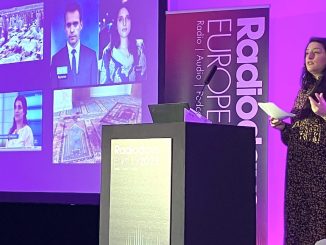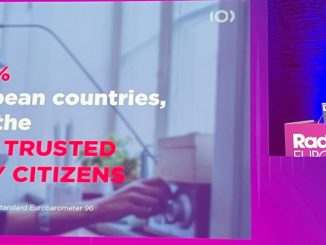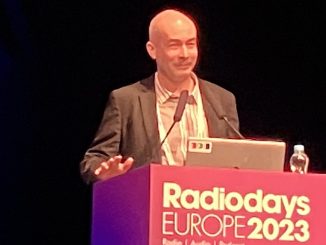
This will keep radio ahead of the competitive curve in cars: Xperi at #RDE23
Xperi has launched a new service that can deliver high quality rich content to listeners’ dashboards and give new insights for programmers into how people are using radio in cars.Speaking at Radiodays Europe, Joe D’Angelo and Desmond Fuller unveiled DTS AutoStage, which “unleashes the power of audio through UX and analytics.” It also puts radio back into a strong position again as auto manufacturers make plans for enhanced entertainment options in autonomous driving cars.Xperi has been working on the rich car radio experience for some time, and has now moved into the second stage of the project by releasing an analytics platform for radio managers and programmers to see how their listeners are using their station while driving.It only tracks car radio usage, but is one more piece in the puzzle for managers as they seek to understand their audiences better. Combined with rich data gathered from mobile apps and market survey data, this new service will give more insights about audience listening habits while commuting.The service works with connected cars that have integrated the Xperi DTS Autostage platform into their dashboard system. It gives drivers and passengers a richer experience by adding related events, interactivity, artist notes, logos, cover art and more to the radio station display. Data is able to be added by presenters or content directors in real time from a portal at the radio station.“This is a global solution,” D’Angelo told conference delegates. “Participation in the platform is free to broadcasters… the company monetises the service by charging car makers a licence fee to use it. We are expanding rapidly within the auto industry.”The service is being expanding to more and more car brands across the world and now serves over 90,000 different radio stations in 147 countries. A BMW with the Xperi enabled dashboard is on display at the conference.Fuller, one of the architects of the system, explained that the broadcaster portal gives editorial control of content and access to audience data. “You can see when and where people are listening and what they are listening to.”“We’ve been working in the car radio space for over 20 years. We saw what was happening in the dash and decided we are uniquely placed to help the radio industry compete with big tech’s attack on the car’s multimedia dashboard… Big Data has changed every industry, why should radio be left behind.”DTS Autostage allows stations to offer a consistent user experience to the “previously lalacklustre radio interface on the car dashboard.”From the programmer’s point of view, the most significant elements are the heat map, which can show you where your listeners are when they are driving around with your radio station on…and the time of day graph, which can pinpoint on a daily basis when your listeners are listening to your station in their cars.Data is available on a daily basis within 24 hours. Given the potential for tracking, the DTS Autostage service has had to proceed carefully to navigate all the appropriate privacy laws in different countries and is now compliant with regulations across the world.The company asks three things of broadcasters who want to take part in the platform:• Permission• A Streaming URL• Live data such as song playing and metadata from playout system“We are now able to prove to programmers, advertisers and agencies that there is still high degrees of listening to radio in cars… digital migration is taking place in front of your eyes.”In preparation for autonomous driving, car makers are becoming proactive about how they offer a richer user interface to people in autonomous cars. “This will hopefully keep radio ahead of the competitive curve,” said Fuller.[embedded content]
Some of the car brands currently using Autostage are shown below. More information here. […]





